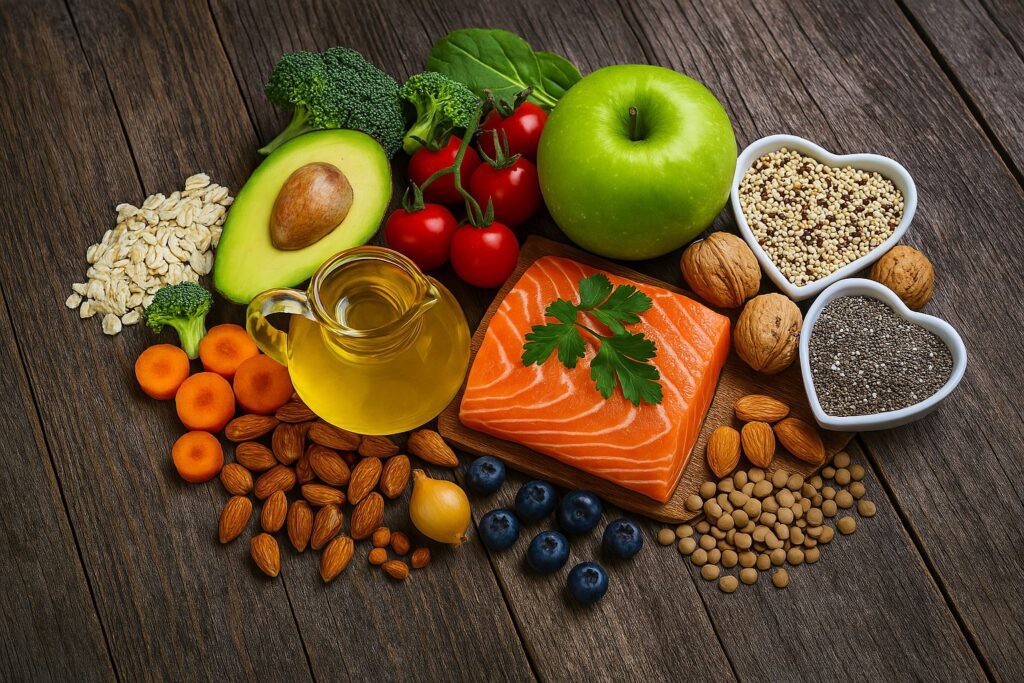Maintaining Cholesterol Balance: The Role of Diet, Genetics, and Liver
It is now better understood that cholesterol is closely related not only to diet but also to the body’s internal system. Balancing cholesterol levels is directly linked to many factors, not just what we eat; it includes genetic predisposition, liver health, and inflammation status. In this article, you will find the factors affecting cholesterol, common misconceptions, and recommendations for maintaining a healthy balance.
Does Egg Increase Cholesterol?
Eggs, especially the yolk, are known for their high cholesterol content. However, current research shows that egg consumption does not significantly increase blood cholesterol in most people. When excess cholesterol is consumed from external sources, the body maintains balance by reducing its own production.
However, some individuals are termed ‘hyperresponders,’ and in these people, egg consumption may lead to an increase in LDL (bad cholesterol) levels. Nevertheless, eggs can be part of a balanced diet as they contain protein with high bioavailability, vitamin B12, vitamin D, and choline.

Foods That Increase and Decrease Cholesterol
Foods That Increase:
- Foods containing saturated fat: Red meat, butter, full-fat dairy products
- Trans fats: Ready-packaged products, fried foods
- Cholesterol-rich organ meats (such as liver)
Foods That Decrease:
- Foods rich in fiber: Oats, barley, vegetables, and fruits
- Healthy fats: Olive oil, avocado, walnuts, almonds
- Fish containing omega-3 fatty acids: Salmon, sardines, mackerel
Cholesterol and Genetic Factors
Cholesterol levels depend not only on lifestyle but also on genetic factors. In individuals with high cholesterol levels despite a healthy diet and lifestyle, a genetic disorder may be present.
What is Familial Hypercholesterolemia (FH)?
Familial hypercholesterolemia is a condition where LDL cholesterol is high due to genetic reasons. In these individuals, cholesterol levels are high from birth, and the risk of cardiovascular diseases at an early age increases. Early diagnosis, appropriate diet, and medication are vital.
What to Do in Case of Genetic High Cholesterol?
- Limit saturated and trans fats
- Increase fibrous foods
- Use medications regularly as prescribed by your doctor (e.g., statins)
- Stay under regular blood test monitoring
The Link Between Inflammation and Cholesterol
Chronic inflammation in the body is an important factor that disrupts cholesterol balance. Inflammation can cause LDL cholesterol to oxidize more easily in the vessel walls and lead to the formation of atherosclerotic plaques.
To Reduce Inflammation:
- Consume antioxidant-rich foods: Strawberries, pomegranate, broccoli, green tea, dark chocolate
- Increase omega-3 intake: Salmon, flaxseed, walnuts
- Avoid refined sugar and processed foods
- Avoid stress, exercise regularly
The Liver is Key to Cholesterol
The liver is the center of cholesterol metabolism. It is responsible for both cholesterol production and the elimination of excess cholesterol. Therefore, when liver health is impaired, cholesterol balance is also disrupted.
To Protect Liver Health:
- Stay away from alcohol and cigarettes
- Follow a liver-friendly diet
- Drink plenty of water
- Avoid unnecessary medication
- Don’t neglect weekly regular physical activity
Summary Recommendations for Maintaining Cholesterol Balance
- Avoid saturated and trans fats
- Focus on vegetables, fruits, whole grains, and healthy fats
- Exercise regularly
- Don’t smoke, limit alcohol
- Protect liver health
- If there’s genetic predisposition, don’t skip medical follow-ups
- Start medication treatment when necessary
Cholesterol balance is not just about food choices. Many factors determine this balance, such as genetic structure, inflammation level, liver function, and lifestyle habits. Being a conscious manager of cholesterol, not its enemy, is the key to a healthy life.
For what cholesterol is, the roles of HDL and LDL cholesterol, and basic information, What is Cholesterol? HDL and LDL Cholesterol Common Misconceptions be sure to read our first article titled.
